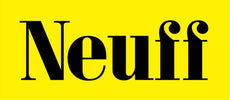
Plyometric Training for Young Athletes
BY BEN HAWKES
Plyometric training is vital for young athletes. In his recent article for Neuff, Owen Heard briefly outlined some standard plyometric training methods and factors contributing to plyometric performance.
This piece will follow a slightly different thread related to plyometrics, looking at why plyometrics are so crucial for young athletes (especially pre-growth spurt), some methods we can use with those young athletes to keep things fun and engaging, as well as tips for improving the movement quality of our youth athletes.

WHY ARE PLYOMETRICS SO IMPORTANT FOR YOUNG ATHLETES?
As we move from childhood into adolescence, our bodies (obviously) change in many ways. It’s easier to think of this maturation process in a few different areas: muscular, metabolic, hormonal and neural.
The muscular system grows following the pubertal growth spurt due to changes to our metabolic and hormonal characteristics.
These metabolic and hormonal changes mean we can adapt more favourably to traditional strength & endurance training, experiencing muscle growth, increasing our lactic threshold, et cetera.
Before these changes happen, though - what we’ll now call our immature state - we don’t adapt much to these training types. What we do have in this immature state, though, is rapid neural growth. Before the growth spurt, a lot of our adaptation to training is in this domain - so we should probably look to design training to make the most of that.
Plyometrics, as Owen said, have a vast nervous system component, both for the force production element of the movement and the coordination aspect. We look to incorporate many of these with our pre-growth spurt athletes.
WHAT ARE THE BEST EXERCISES FOR JUNIOR ATHLETES?

TAKING A GAMES-BASED APPROACH: KEEP THINGS FUN!
Especially with pre-growth spurt athletes, games are a great way to get them involved and engaged with the training process.
When using games, though, it’s important not to lose sight of the quality of movement on display and to continue to actually coach each athlete.
Some ways we can do this include...
- Red Light Green Light
- Musical Movement Skills
- Group Movement Flow Routines / Performances / Handshakes
- Mirror Drills
- Obstacle Courses
- Races
THE BASICS OF PLYOMETRICS
During these different games, it’s essential to remember the rough characteristics of what we want our movement to look like.
We want to make sure athletes are:
- Creating enough stability and stiffness at the foot and ankle
- Controlling their pelvis
- Controlling their spine & eyeline
- Moving fluidly with good timing, anticipation and awareness
All of these things are important for manipulating your centre of mass and ensuring effective ground contact with minimal force leakage.

SIMPLE CUEING FOR SIMPLE MOVEMENTS
Outside of these basic principles, I don’t look to go into much more detail with young athletes. They don’t necessarily need it, and likely won’t understand what you’re saying.
On this note, using metaphorical, action/outcome-based cues rather than internal ones can be useful.
For example: “push the floor away and be strong like a rocket, not floppy like jelly” instead of “extend your knee, ankle and hip whilst bracing through your core to create as much force as possible”. This helps them understand what you want the movement to look like; what you mean.
3 POINTS ON PLYOMETRICS FOR YOUNG ATHLETES
- Plyometrics are great for young athletes!
- You can gamify plyos really easily and change the constraints to bias either stability (landings) or elasticity (rebounds)
- Use symbolic, action-based cues
Until next time ✌
ABOUT BEN HAWKES

Ben is a hammer thrower who competes internationally for Great Britain and Northern Ireland and is also a sport massage therapist and strength and conditioning coach.
He has been writing content and producing videos for us for over a year, and his content focuses on hammer throwing tips and strength & conditioning guides for your athletic training!
Instagram: @benhawkes1
Twitter: @ben_hawkes1


Leave a comment